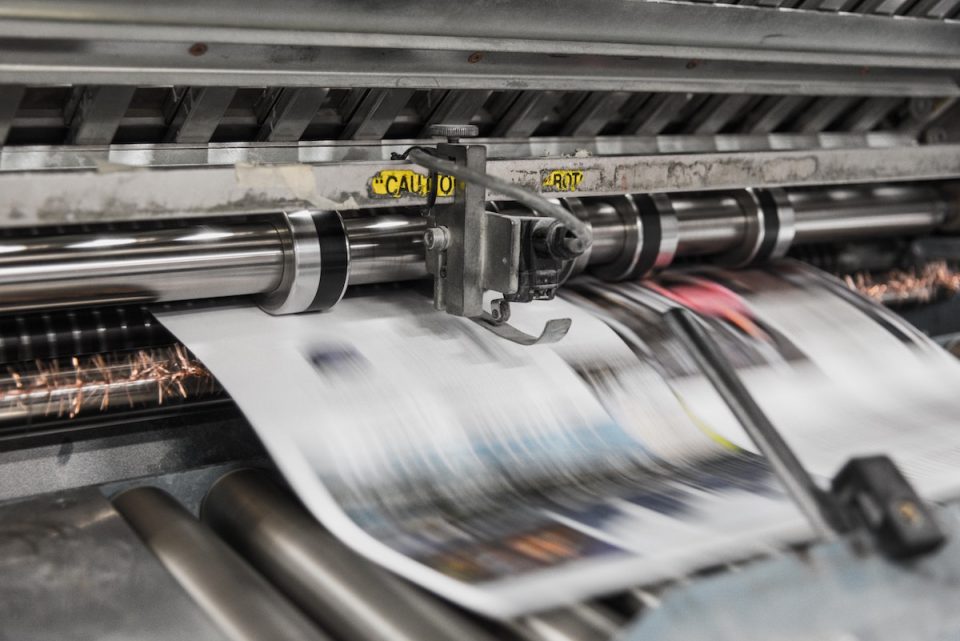Fake News – the phenomenon

How to overcome writer’s block
January 22, 2019
How Paper Can Help Effective Brainstorming in Meetings
February 5, 2019
Wherever you are in the world, chances are you heard a lot about “fake news” in 2018. While the idea of media bias is not new, the promotion of this term as a political weapon marks a worrying epoch in political journalism.
For as long as we have had journalism, we’ve had a bias: compare the story of the Battle of Hastings in 1066 as told on the Bayeux tapestry with that told in British children’s history books.
American journalism has always prided itself on dealing with this bias by managing it, generally through the commitment to balance.
But social media has now changed the way we consume news – many people no longer get their “news” through the traditional channels that are committed to unbiased and balanced reporting.
This led Hillary Clinton to complain about Fake News in a speech on 8 December 2016. Thought to be in reference to Pizzagate – a debunked internet myth that inspired a gunman to enter a Washington pizza restaurant – she decried “the epidemic of malicious fake news and false propaganda that flooded social media over the past year,” saying, “It’s now clear that so-called fake news can have real-world consequences.”
Fake news definition by Donald Trump
For a brief moment in time, Fake News simply meant news that wasn’t true. But then, BBC journalist Dave Lee explains, “seemingly overnight, Donald Trump took the phrase Fake News and co-opted it to mean news he simply didn’t like”.
By discrediting news outlets, Trump is saying “don’t trust them; trust me”. This approach has helped to ensure negative stories simply “bounce off” the President; amongst his supporters, trust in the media sits at record lows.
While it might be a winning strategy in the short term, it is also a highly divisive one. Trump pairs it with a second technique of repeating falsehoods on the basis that if you say something often enough it “becomes true” – or, at least, accepted as true.
On 26 December 2018, David Kaye, the U.N. Special Rapporteur on Freedom of Expression and Opinion, said that Trump is the worst perpetrator of Fake News: “In my own country, the United States, the worst perpetrator of false information is the President of the United States.”
Meanwhile, The BBC Director-General, Tony Hall, has said the problem is only likely to get worse when technologies to manipulate video images become widespread. He warns it is one of the “biggest threats facing our democracies”.
Fighting “fake news” epidemic
In an effort to counter the Fake News epidemic, social media platforms have found themselves in the firing line, but so far counter-methods have proved ineffective. However, the problem is complex; the term Fake News covers a multitude of problems. While some stories emerge for political reasons, many of the people generating Fake News stories are financially motivated.
Clare Wardle of First Draft News, a truth-seeking non-profit based at Harvard’s Shorenstein Centre, says, “If we’re going to start thinking of ways we can intervene, we’re going to have to have clear definitions”.
To this end, she has listed the seven key types of misinformation and disinformation:
- Satire or parody
- Misleading content
- Imposter content
- Fabricated content
- False connection
- False content
- Manipulated content
By breaking down the type of misinformation, why it has been produced, by whom, and for what purpose, Wardle argues we are better placed to interpret it and deal with it.
Meanwhile, Hillary Clinton has challenged the US media to become savvier when it comes to tackling Trump’s Fake News claims and disinformation, arguing that his “tweeting and insulting and dominating the news cycles” is too often left unchallenged by the press.
“I believe that where we are now in the political cycle is that the press does not know how to cover these candidates who are setting themselves on fire every day, who are masters of diversion and distraction,” she said.
A claim that Trump would no doubt dismiss as Fake News.



